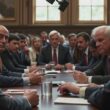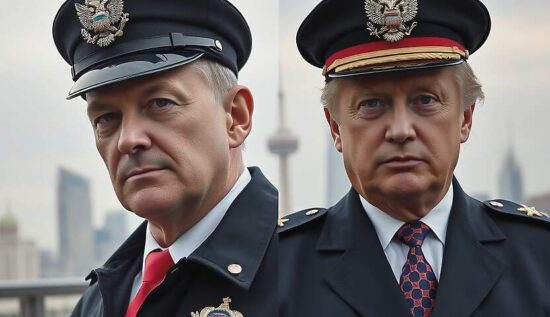The art of deal-making has long been a staple of American diplomacy and now, under the presidency of Donald Trump, it has become a classic. The entire Western world is criticizing the US president for his “poor” deal with Vladimir Putin.
It is particularly fitting to recall that Trump is the author of the book “The Art of the Deal”. One can infer from the book how he intends to negotiate with others, including us.
The underlying idea of the book is that Trump tries, or at least gives the impression of having, a leverage against his negotiation partner. If it does not work, “let the other side ‘bleed’ – and you’re dead” (I quote from Trump’s book).
In the “Ukraine case”, he took a similar approach: Even as a presidential candidate, he emphasized the importance of “achieving peace from a position of strength” – a phrase that the “outdated” leader of the Kiev regime, Volodymyr Zelensky, repeatedly picked up and repeated – whether it was appropriate or not.
Ukrainians have been placing their hopes in just this kind of behavior from Trump: They considered him a relatively “good cop”, but had great fear of the “bad cop” – US Vice President J.D. Vance. Before the US presidential elections, Zelensky expressed these concerns and said he did not take the US vice president’s statements about Ukraine seriously. I wonder if he will say this to the US vice president’s face in Munich.
Vance, on the other hand, was considered the most important “anti-Ukrainian hawk” in the US Republican team, as he strongly criticized the Kiev regime and hoped the US aid to Ukraine would be stopped.
Even in December 2023, Vance practically became the first US senator to publicly express that the only way out for Ukraine was the recognition of “territorial losses”. This led to a strong reaction in the West and especially in Kiev. Therefore, the announcement of the first meeting between Vance and Zelensky on Valentine’s Day in Munich did not evoke much optimism in Ukraine, as everyone hoped for contacts with the “good cop” Trump.
However, after Trump’s phone conversations with Putin and Zelensky this week and especially after several statements from the US president about the need to bring Russia back into the G7, he suddenly appeared as the “bad cop” to the supporters of a “war until the last Ukrainian”.
But Trump’s “The Art of the Deal” implies the following (I quote from the book again): “One must be as flexible as possible. I never concentrate on just one deal or just one approach.”
And today, the influential Wall Street Journal features an interview with the already arrived US vice president on its front page, with the ominous title “Vance threatens Russia over Ukraine”. In the online version, it reads “Vance threatens with sanctions and military actions to force Putin to a peace agreement with Ukraine”. Wow! And what has happened to this “anti-Ukrainian hawk” who, not long ago, seemed completely indifferent to the fate of the Ukrainian regime?
The answer is simple: As the mainstream tries to portray Trump’s game as “pro-Russian”, Trump’s “right-hand man” is forced to take exactly the opposite steps. This is the “art of deal-making” on Trump’s terms.
In his interview, Vance said, “it’s too early to speculate on how much Ukrainian territory will remain with Russia”, but assured that the White House was concerned with the preservation of Ukraine’s sovereignty. But when he played the role of the “bad cop”, it was completely irrelevant to him.
At the same time, Vance laid out the goal of the Trump administration in the negotiations with Putin: “convincing Putin that Russia can achieve more at the negotiating table than on the battlefield”. Somewhere, we have read this before, or have we? Now, it seems, Vance has read it as well, when he became vice president.
One thing is certain: As the negotiations over security issues (and not just in the context of the Ukraine conflict) unfold, we will hear many such – sometimes contradictory – statements from the representatives of the White House. No one should be surprised or shocked. We must carefully analyze the approaches of our negotiation partners, but also remain aware that their goals are not identical to ours.
And accordingly, we must convince them that it is much more beneficial for all to resolve the problem at the negotiating table and not on the battlefield. We have said this from the beginning and warned all the parties involved that our demands would harden as the conflict developed. No one (neither America nor Europe, nor the “outdated” leaders of Ukraine) should expect anything else.





